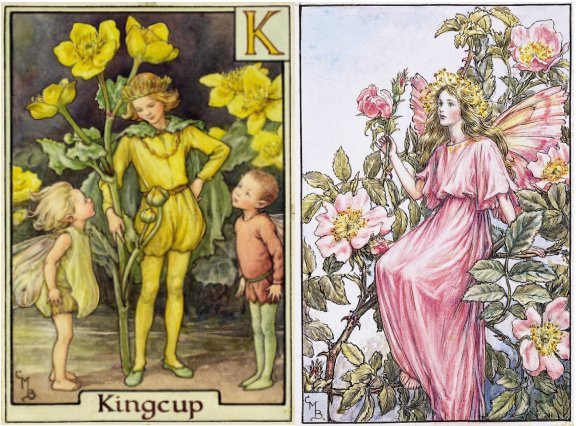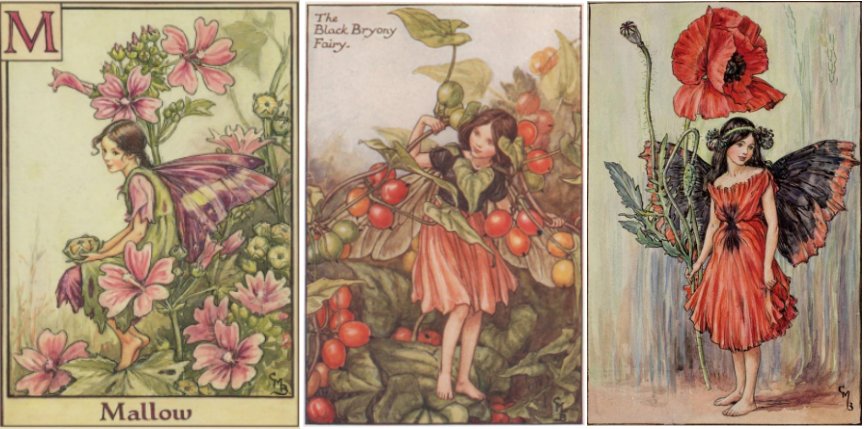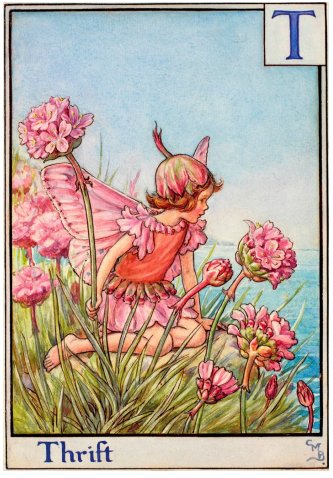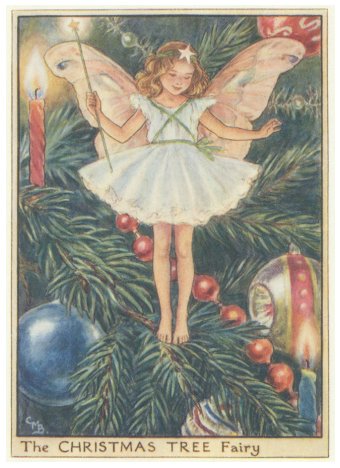I was fascinated by wild flowers at an early age, possibly because our garden was a wee bit wild. My father in his vegetable patch waged war on the weeds that challenged his sprouting broccoli and Jerusalem artichokes, but my mother’s half-hearted attempts to liven the flower boards with the odd packet of Virginia stocks left plenty of room for Germander Speedwell, Scarlet Pimpernel and knapweed.
I had plenty of Ladybird books to encourage an interest in nature. Not many of the famous hero biographies or retelling of fairytales, but the Ladybird book of British Wild Flowers (and Mammals, Birds, Trees… possibly fish, but I’m not sure. I’ve never really got fish). They were quite instructive, an excellent starting point, and I eventually moved on the much more impressively adult Observer book of wild flowers, which fitted neatly in a pocket and made very little effort to be artistic.
I finished up with a seriously adult academic book on wild flowers – can’t remember precisely what it was called, because it fell to pieces. But you could tell that it was seriously adult and academic because it was full of line drawings of leaf arrangements and cross-sections of stems, plus words like carpel, sepal, anther, stamen and stigma. Very informative, very soul-destroying.
It wasn’t my soul being destroyed but the souls of the wild flowers because flowers obviously have souls. I knew this because, along with all those educationally-minded flower guides, I also had a whole collection of the flower fair books by Cicely Mary Barker. Flower Fairy alphabet, Flower Fairies of the Wayside, Flower Fairies of the Spring/Summer/Autumn, Winter etc. They made an impression that has lingered a surprisingly long time.

I still see wild roses and kingcups as the king and queen of the flower kingdom. Of course they are. Mallow always seems such a sad flower to me because the mallow fairy looks so wistful. When I walk up my lane in the autumn while it’s strewn with garlands of black bryony berries, I instantly picture the black bryony fairy. Field poppies may symbolise the war dead of the trenches, but isn’t it obvious that they are really vibrant fairies?

When I walk along the Pembrokeshire coast path in spring, yes I could dissect the flowers in passing, and separate carpel from sepal, or identify leaf arrangements as alternate, whorls or spirals, but I more likely to light upon a clump of thrift and declaim “Oh lucky thrift to live so free, between blue sky and bluer sea…” before my companions grind their teeth and tell me to shut up.

Which had had the greatest influence in the long run? The educational, or Cicely Mary Barker’s whimsy. I suspect the latter.
Just to complete this post in a seasonal fashion, I give you this one.

I had all those Ladybirds books – actually, I still do – but not a fish one. I also came across the flower fairies and my mother bought several china plates depicting them that she hung around the room. They weren’t as nice, somehow, on porcelain rather than paper. Merry Christmas!
LikeLiked by 1 person
I did make an inch high porcelain poppy fairy for a friend. Much better on paper.
LikeLiked by 1 person
I help a 70-year-old lady with her garden and she still enthuses about these fairy flower books. I’m managed to get hold of some online and she was overjoyed.
LikeLiked by 1 person
They really were a very good introduction to botany. And the whole series is available now as a single volume. I know because I bought it.
LikeLiked by 1 person